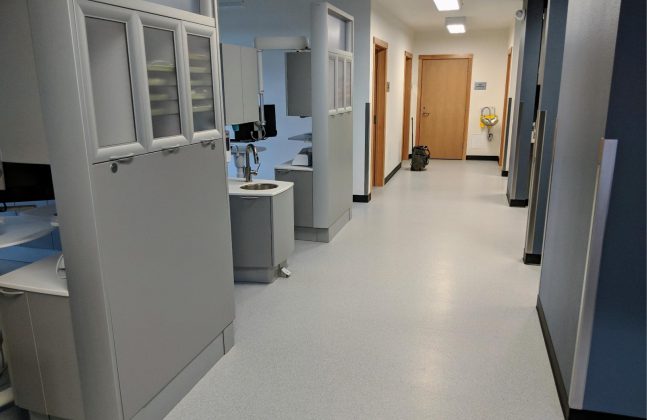From cleanliness and accessibility to heavy wear, wayfinding and promoting a healing environment — hospitals face many daily demands. Your flooring is no exception, and it’s a crucial part of creating a quality care setting. In this article, we show you hospital flooring options for various areas of your facility and explore the core requirements your floors must meet in 2019.
Entrance areas
Entrances are the first area patients, families and visitors see in your hospital. They help your patrons locate services, and they see the heaviest foot traffic and rolling loads. You’ll want a durable, welcoming floor that promotes your design vision and makes a strong first impression.
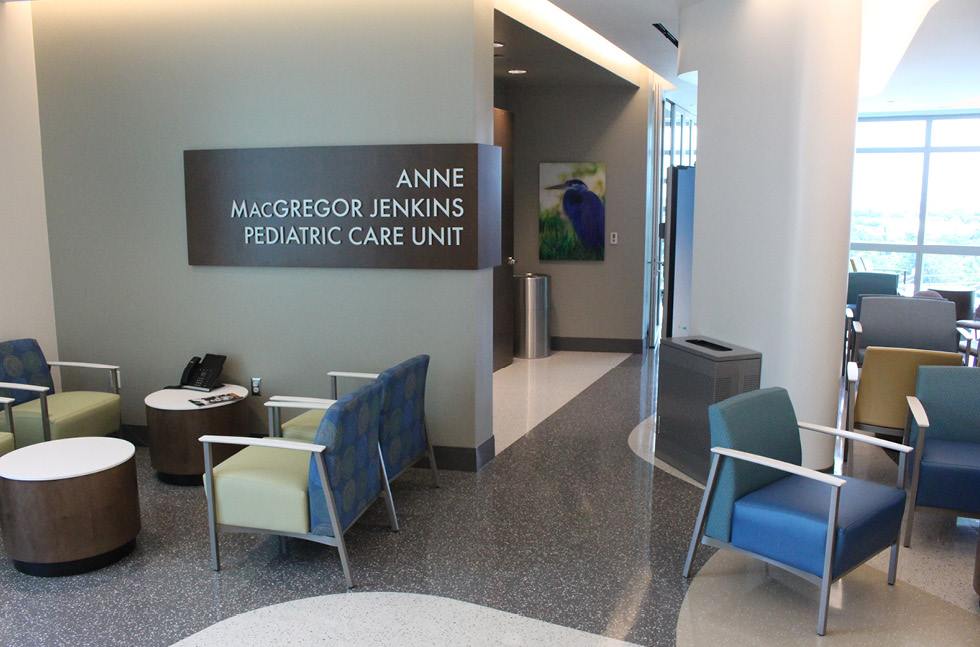
Entrance ways are the first area that patients see
We highly recommend terrazzo and luxury vinyl tile (LVT) for entrance areas. Terrazzo is a premium, highly durable option that requires minimal maintenance and lasts for decades. It stands up well to rolling loads, is handicap-friendly and is now available in largely recyclable materials. LVT offers much of the same durability and even more design versatility.
Corridors and clinical areas
Corridors are the main arteries of your hospital and see heavy use 24-7, including foot traffic and heavy rolling loads, such as equipment carts, stretchers, med carts and wheelchairs. To minimize disruptions, flooring in corridors requires rapid installation and must be highly durable to minimize maintenance. Themed and patterned flooring with lively colors can help you create clear paths that identify care areas. Corridor flooring can help reduce stress and promote healing by supporting an evidence-based design scheme.
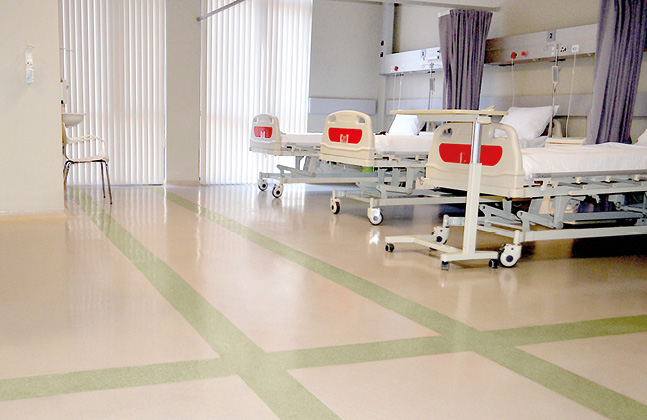
Demarcation can highlight walkways and areas where equipment is kept
Rubber and LVT are two popular hospital flooring options that meet all of these performance requirements. Both save time during installation, as they can come with pre-applied adhesive on the backings. Free-floating LVT options even cut out adhesives altogether. Both rubber and LVT can come with protective coatings that resist scratches and scuffs, reducing maintenance disruptions, labor, water, and chemicals. Both come in a variety of textures, colors, and patterns. LVT, in particular, emulates soothing natural textures, such as wood, stone and more, but with better durability and a lower price than traditional materials.
Emergency and operating rooms
Emergency and operating rooms must meet the most strict infection control requirements and remain usable 24-7. You’ll want easy-to-clean materials that promote cleanliness. Using smooth or low-texture flooring and proper installation keeps dirt and fluids from slipping beneath the surface of your floor.
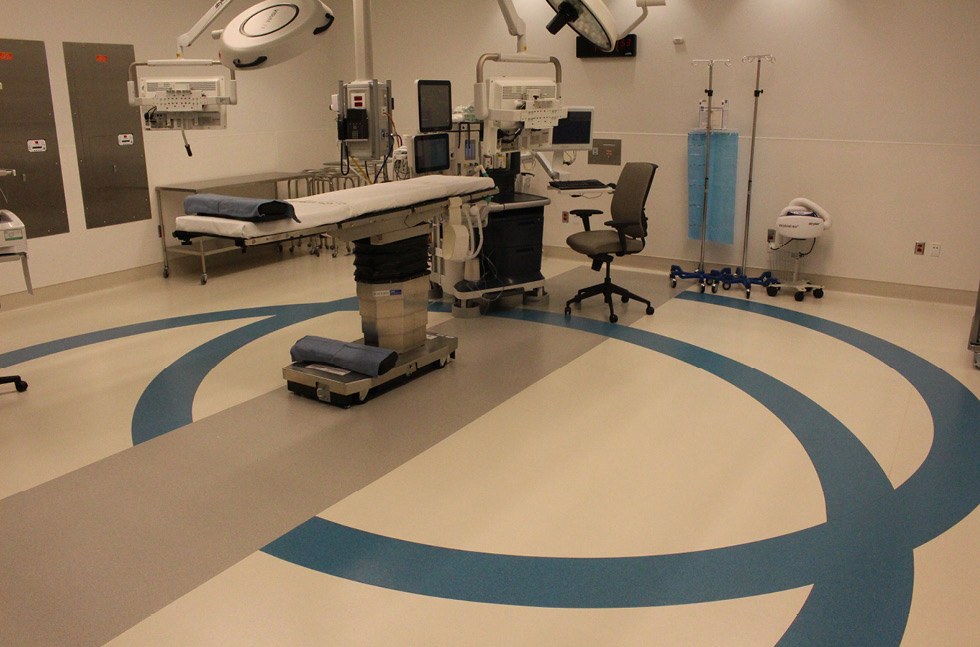
Hygiene is of the utmost importance in emergency and operating rooms
Resin flooring is a perfect solution for these areas. When it comes to benefits, a properly installed resin floor can provide your facility with a durable, safe, and flexible walking surface. Not to mention, resin floors are one of the most hygienic and chemical resistant flooring solutions on the market. Much like cleaning a kitchen countertop, spills can be easily dealt with by simply wiping them away as they will never settle or sink below the surface. Resin flooring is also one of the most popular flooring options in regards to aesthetics. With a wide range of design options and customizations, industrial resin floors are capable of meeting virtually any design vision.
Cafeterias
The best cafeteria floors are stain-resistant, easy to clean and slip-resistant. A patterned, textured floor can benefit your cafeteria by both reducing and hiding scuffs and scratches. Evidence-based design dictates hospital cafeterias should be comfortable environments that promote relaxation and reduce stress.
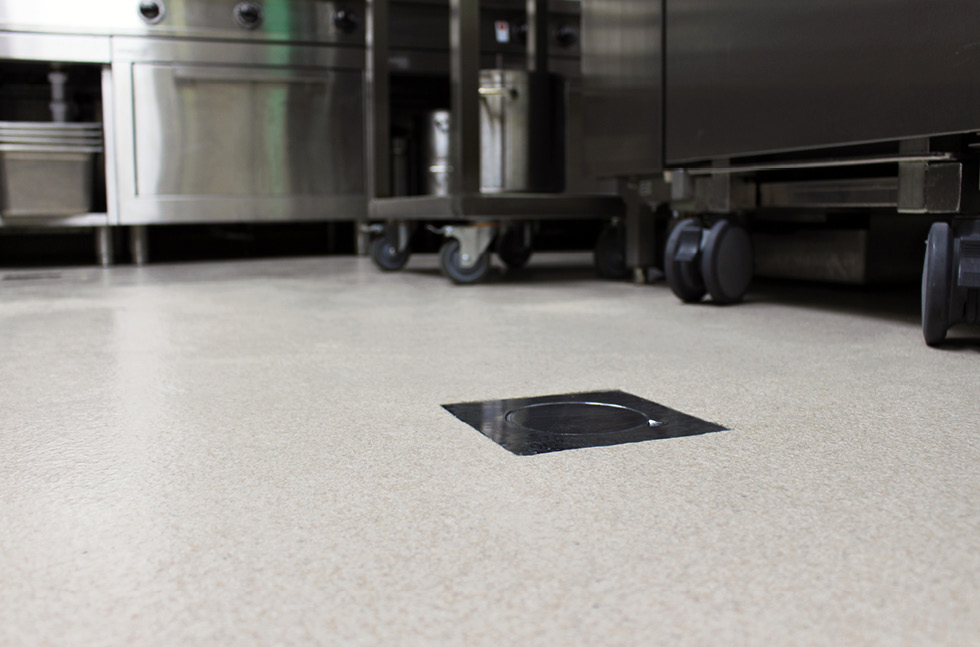
Cafeteria areas should be easy to clean and slip resistant
Hospital flooring options that meet all of these requirements include sheet vinyl, LVT and tile. They afford great design versatility with vibrant colors and natural textures while providing lasting durability.
Nurse’s stations and treatment areas
Staff and patients spend most of their time in these environments, and nurse’s stations never shut down. Flooring should promote stress reduction, comfort and 24-7 access with materials that allow rapid installation and minimize maintenance.
To suit these purposes, many hospitals have moved away from traditional linoleum and vinyl composition tile (VCT) for nurse’s stations and functional treatment areas. Instead, hospitals are turning to LVT, bio-based tile (BBT) and sheet tile flooring made from low-VOC materials. We recommend flooring options within these categories that have protective coatings, as they’ll resist scratches and minimize the need for waxing, buffing and chemical cleaning. Free-floating LVT and materials with adhesive backings will reduce installation times and disruption to these critical care areas.
Patient rooms
In many hospitals, patient rooms are designed to emulate home-like environments. As these rooms do not require aseptic flooring, you have more options for materials, adhesives and installation methods. You have the flexibility to specify warm, inviting flooring with natural textures.
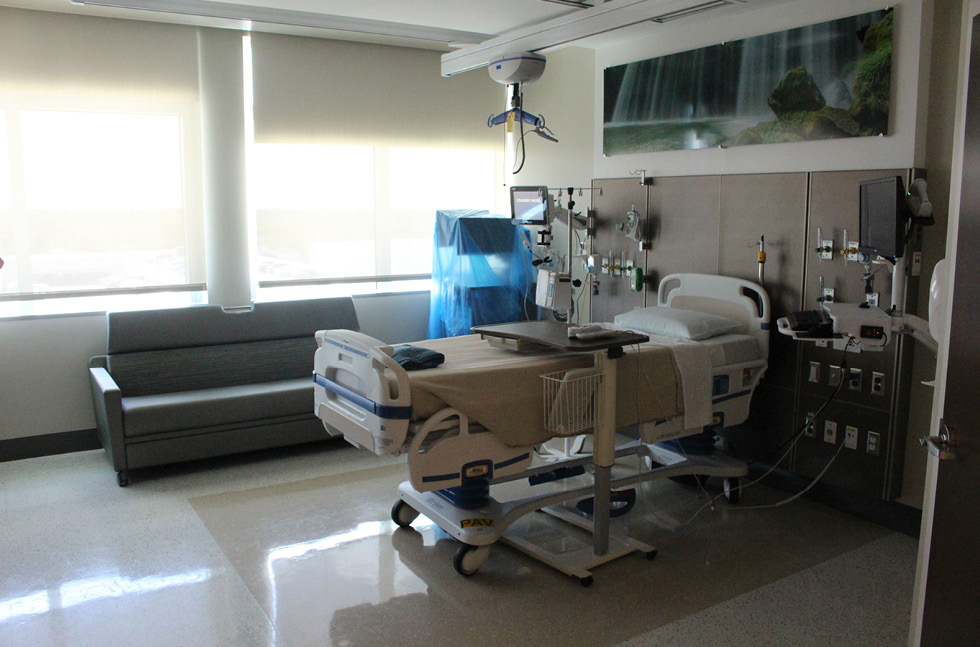
Patent rooms need to look and feel as comfortable as possible
LVT, linoleum and sheet tile are great options that provide stone, wood, tweed and other natural looks with more durability at a lower cost than natural materials. They can all work with rapid installation systems. One new option to consider is textile flooring, a material that provides the feel of carpet with the durability and performance of tile.
Resources for selecting hospital flooring options
In recent years, a variety of evaluation and rating systems have emerged to aid in the selection of materials that meet hospitals’ rigorous demands. Some of the biggest include:
- LEED for Healthcare — A flooring rating system developed by the U.S. Green Building Council (USGBC) that takes evidence-based design and indoor air quality into account
- Green Guide for Healthcare (GGHC) — a best-practices guide for healthy and sustainable design, construction and operations for healthcare facilities
- FloorScore — a rating system developed by the Resilient Floor Covering Institute (RFCI) in conjunction with Scientific Certification Systems (SCS) that evaluates flooring for VOC emission levels and compliance with other rating systems
- ecoScorecard — a composite tool showing flooring products that comply with the most popular rating systems

